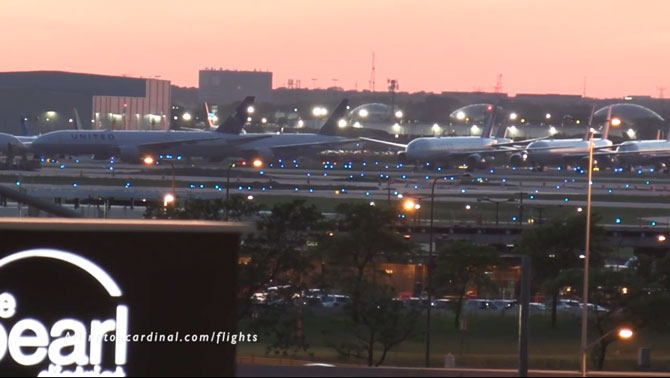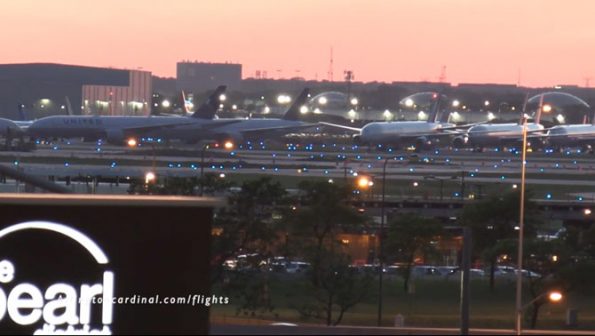
The FAA issued on Thursday July 23, 2020 an Emergency Airworthiness Directive (AD) regarding a maintenance issue with the Boeing 737 classic and next generation aircraft (300 through 900ER series). There were four reports of recent single engine shutdowns shown to be caused by an engine bleed air valve being stuck open. The air valve issue is apparently caused by corrosion build-up that occurs while unused aircraft are in prolonged storage during reduced travel during the Coronavirus COVID-19 pandemic.
Only single engine failures occurred in the four incidents, but there is serious concern about the failure of both engines in flight, which could cause an aircraft crash or forced landing outside an airport. Due to zero carbon goals and cost-efficient fuel use, many airlines are using two-engine aircraft designed for fuel efficiency. Recently many four-engine Boeing 747 passenger jets have been retired because of the lack of demand in travel caused by the Coronavirus COVID-19 pandemic.
Emergency Airworthiness Directive (AD) 2020-16-51 was sent to owners and operators of The Boeing Company Model 737-300, -400, -500, -600, -700, -700C, -800, -900, and -900ER series airplanes.
The Boeing 737 Classic is the name given to the -300/-400/-500 series aircraft. The Boeing 737 NG for Next Generation is the name given to the 737-600, 737-700/-700ER, 737-800, and 737-900/-900ER series aircraft.
“Corrosion of the engine bleed air 5th stage check valve internal parts during airplane storage may cause the valve to stick in the open position. If this valve opens normally at takeoff power, it may become stuck in the open position during flight and fail to close when power is reduced at top of descent, resulting in an unrecoverable compressor stall and the inability to restart the engine. Corrosion of these valves on both engines could result in a dual-engine power loss without the ability to restart. This condition, if not addressed, could result in compressor stalls and dual-engine power loss without the ability to restart, which could result in a forced off-airport landing.”
The FAA reported it is issuing this Airworthiness Directive because the agency evaluated all the relevant information and
determined the unsafe condition described previously is likely to exist or develop in other products of the same type design. The directive did not initially involve the grounded Boeing 737 MAX.
Losing one of two engines is a serious inflight emergency, and losing both engines obviously could be catastrophic. There are about 9,000 aircraft in service affected by the airworthiness directive. There were 1,988 Classic series aircraft produced (1981-2000) and there are over 7,000 Next Generation series aircraft produced (1996-present). Prior to the Classic models, there were 30 Boeing 737-100 models produced, and 1095 Boeing 737-200 models produced from 1967 to 1988. There are no 737-100s in commercial service, and the Boeing 737-200 is apparently not affected by Emergency Airworthiness Directive (AD) #2020-16-51.
The FAA ordered that inspections need to be made “for any airplane that is in storage on or after the date of receipt of the AD, and any airplane that, as of the date of receipt of this AD, has been operated for 10 or fewer flight cycles since returning to service from the most recent period of storage.” The FAA defines aircraft in storage for any 7-day period without operation. The inspection involves rotating a flapper three times by hand, attempts to rotate flasher bushings, internal equipment clearance measurements, and visual inspection.
Failure of the inspection requires a check valve part replacement.
Safety of any stored aircraft’s return to service is a concern regarding safety to fly. Depending on the length of storage, aircraft can require a few days or a few weeks to be prepared to return to service. During storage the weather and atmospheric conditions, such as moisture, condensation, humidity, wind, and exposure to ultraviolet light (especially upon instruments in the cabin) are a serious concern. For example, window shades are secured in the cockpit or flight deck to protect instrumentation devices. Maintenance and even maintenance flights are required during longterm storage.
SOURCE:
EMERGENCY AIRWORTHINESS DIRECTIVE AD #: 2020-1651

^^ MOBILE? USE VOICE MIC ^^
facebook …
Please ‘LIKE’ the ‘Arlington Cardinal Page. See all of The Cardinal Facebook fan pages at Arlingtoncardinal.com/about/facebook …
Help fund The Cardinal Arlingtoncardinal.com/sponsor
20240105-1435future
THANKS FOR READING CARDINAL NEWS
